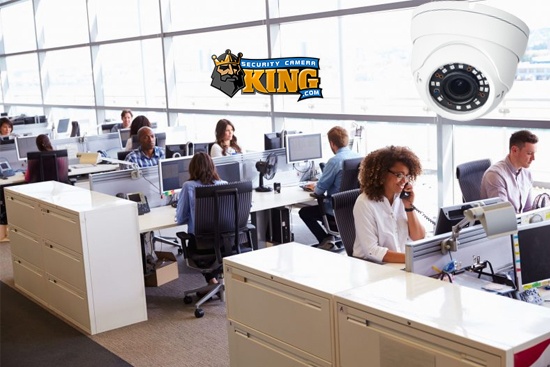Imagine walking into your business the morning after something occurred overnight, and you need the video that will help locate the suspect. You find out your system was not recording, or the equipment just turned itself off and failed to capture the event. Frustration understood. You bought the equipment for the specific reason to record when a wrongdoing occurs. Often, system failure is due to the lack of security recorder maintenance on your recorder or cameras. Equipment failures can happen and will happen if proper attention is not paid to the device over time.
A DVR/NVR is an apparatus for security, and it is important to keep it running at optimal performance. Security Recorder Maintenance will prolong the life of the unit and reduce potential for future operational anomalies and failures.
When the system is initially installed, generally there is no documentation providing recommended maintenance for the equipment. This article will give you some general insight, and suggestions, on how to maintain your security system and cameras. Of course, not even the “master of maintaining” can control the “other” factors that also cause the same failures. For example, power outages, storms, lightning, brownouts, circuit trips, alien invasions, etc.
Here is a little bit about EOS/ESD, dust and humidity, specifically.
EOS and ESD (electrical overstress, electric static discharge respectively) are the most common causes of failure for any electrical device. The odds are greater in that a random power surge, lightning strike, failing power supply, or lasting brownout will occur more often than the very slow, progressive, deterioration caused by dust and humidity. Therefore, we should understand the device’s power source and incoming voltage to the system. It is common knowledge in the tech world that ESD are those tiny little rascal lightning bolts that discharge when you come in contact with something after rubbing a balloon on your head or feet against the carpet. Yep, those can damage a circuit board also known as the PCB (Printed circuit board), in a heartbeat if there is direct contact to the board. Of course, the probability that the mainboard would be on the outside of the chassis is about none, but it is still good to know about the effects of ESD when you are maintaining the system.
EOS is another form of over-voltage. EOS can be a momentary event or can cause damage over a course of time. Unlike ESD, where the electricity is dispersed immediately at higher voltages and amperes, EOS is defined as the voltage throughout that exceeds the specified limitations of the device. If the incoming voltage is beyond the specific limitations of the device, EOS will cause localized high temperatures in materials used in the device’s architecture affecting the whole device. You can help prevent EOS by incorporating proper grounding and shielding of lines and receptacles, and only using the correct power supplies.
Examples of damage caused by EOS:
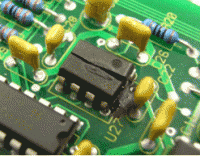
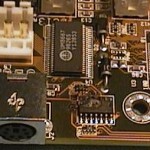
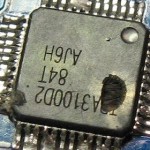
Dust is everywhere and humidity may be present as well. Both of these environmental factors can cause issues with any electrical device. When dust collects on electronic components, it eventually interferes with the flow of electricity through the PCB. Over time, the accumulated dust becomes an insulator, potentially overheating circuits and increasing the chance of failure in capacitors or other vital parts of the PCB creating functional anomalies, random shutdowns, inconsistent operational issues.
Examples of Dust:
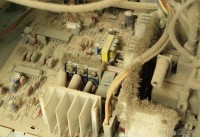
enough said
Humidity also has a part to play in this. PCBs can suffer from a variety of problems if the surface is covered with electrically conducting materials, like dust, and combined with moisture, this results in a lowering of resistance and eventually can lead to corrosion of metals. Protect the equipment from humidity by using a bit common sense. Do not install your system in a rain barrel. Some installations are required to install the security equipment in a separate building or a secured shed with no climate control. In these unique circumstances, there are products available that are air tight with ventilation. Luckily, improvements have been made in manufacturing. PCB makers will generally apply a conformal coating over the PCB to help reduce the impact of this natural nuisance!
Examples of damage caused by humidity (rust):
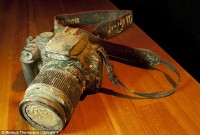
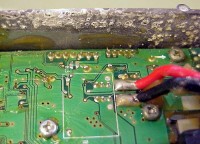


Side note: ANY variation of system overheating, whether it be caused by poor ventilation, dust, humidity, overvoltage, etc. wears down the system circuitry, decreases performance, and increases system instability.
Now that we have covered some of the basics in “high tech equipment nuisances 101,” here are some suggested practical measures to follow in taking care of your security investment.
Monthly
– Blow out and clean all case fans with compressed/canned air
– Perform a search of footage, varying dates. Doing this checks HDD recording performance.
No footage = Possible HDD issues
Three Months
– Repeat Monthly maintenance
– Look for any video footage anomalies that may indicate a failing camera. This includes camera images that do not look focused and clear, rolling vertical/horizontal lines, diagonal lines, wavy image, color/lighting fluctuations, really bright/dark images (without manual adjustments) etc.
Six Months
– Repeat 3 month DVR maintenance
– Open the case and blow out the system (while unit is turned completely OFF) with compressed/canned air. Make sure to clean out all components, including the power supply (if power supply is mounted inside the unit).
– Run a Hard drive check from the System Main Menu (not available in some models)
– Test UPS battery backup by pulling the plug from the wall. UPS is a highly recommended accessory to have for surveillance equipment.
Annually
– Repeat 6 month DVR maintenance
– Meter the UPS and/or Line Conditioner for proper voltage. Also meter the incoming voltage at the wall to determine your raw power conditions.
Of course you can create your own maintenance schedule if you choose. There is no set procedure that needs to be followed. Just keep in mind that the goal is to inspect the equipment and keep it clean. Take care of it, and it will take care of you. A happy recorder is a trustworthy recorder. Hypothetically speaking, if the system is stellar, the camera system may even capture a real ghost using motion detection! In broad daylight! Give yourself a gold star for that! Watch out Ghost Hunters, the mother of maintained surveillance equipment is here!










